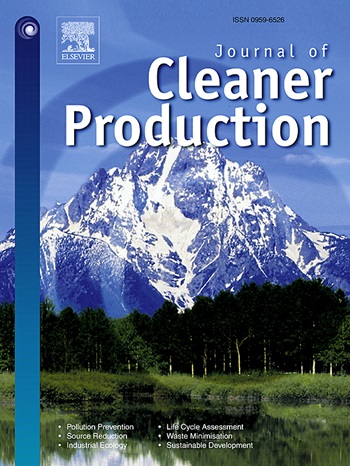Comparison of Environmental Impacts in the Production of Graphene from Biomass Waste and the Hummers' Method
IF 9.7
1区 环境科学与生态学
Q1 ENGINEERING, ENVIRONMENTAL
引用次数: 0
Abstract
Graphene has found extensive applications in a wide range of critical technologies, and demand is anticipated to grow exponentially in the coming years. This research investigates the environmental impacts of two laboratory-scale methods for graphene production, focusing on their potential applications in electronic devices. The Hummers' method effectively produces high-performance reduced graphene oxide; however, it has faced criticism due to toxic emissions. In contrast, the production of graphene from biomass waste through pyrolysis offers a more environmentally friendly alternative for sustainable manufacturing. A cradle-to-gate life cycle assessment (LCA) is conducted, focusing on three biomass waste materials: banana peel waste, wheat straw waste, and Populus wood waste (PWW), which serve as precursors for graphene production via potassium hydroxide (KOH) activation. The analysis evaluates global warming potential (GWP) and cumulative energy demand using two functional units: 1 kg of produced graphene and a conductivity normalized unit for specific applications. The results indicate that graphene production from PWW is considerably more environmentally sustainable, reducing the GWP from 4,841 kg CO2 equivalent per kg in the Hummers' method to 115.86 kg CO2 equivalent per kg for PWW-derived graphene. The results obtained from the comparison of hydrazine-reduced graphene oxide (h-rGO) and graphene derived from PWW, based on FU2, illustrate that the total energy consumption for h-rGO per 1 mg. S-1.m-1 is 15 times higher than that for graphene derived from PWW. Electricity consumption is identified as the highest contributor to environmental impacts in graphene production, particularly given the current Iranian electricity mix, which heavily relies on fossil fuels. Furthermore, the usage of KOH was a notable contributor to the environmental impact, with 83% of the GWP impact for PWW-derived graphene attributed to electricity consumption and 13% to KOH consumption. A sensitivity analysis based on three scenarios is conducted, which includes a transition to renewable energy, a 20% reduction in electricity consumption, and a 20% reduction in KOH usage. The results showed that transitioning to renewable energy sources, such as wind power, could significantly reduce environmental impacts. This study illustrates the potential environmental advantages of utilizing biomass waste as a precursor for graphene production.求助全文
约1分钟内获得全文
求助全文
来源期刊

Journal of Cleaner Production
环境科学-工程:环境
CiteScore
20.40
自引率
9.00%
发文量
4720
审稿时长
111 days
期刊介绍:
The Journal of Cleaner Production is an international, transdisciplinary journal that addresses and discusses theoretical and practical Cleaner Production, Environmental, and Sustainability issues. It aims to help societies become more sustainable by focusing on the concept of 'Cleaner Production', which aims at preventing waste production and increasing efficiencies in energy, water, resources, and human capital use. The journal serves as a platform for corporations, governments, education institutions, regions, and societies to engage in discussions and research related to Cleaner Production, environmental, and sustainability practices.
 求助内容:
求助内容: 应助结果提醒方式:
应助结果提醒方式:


